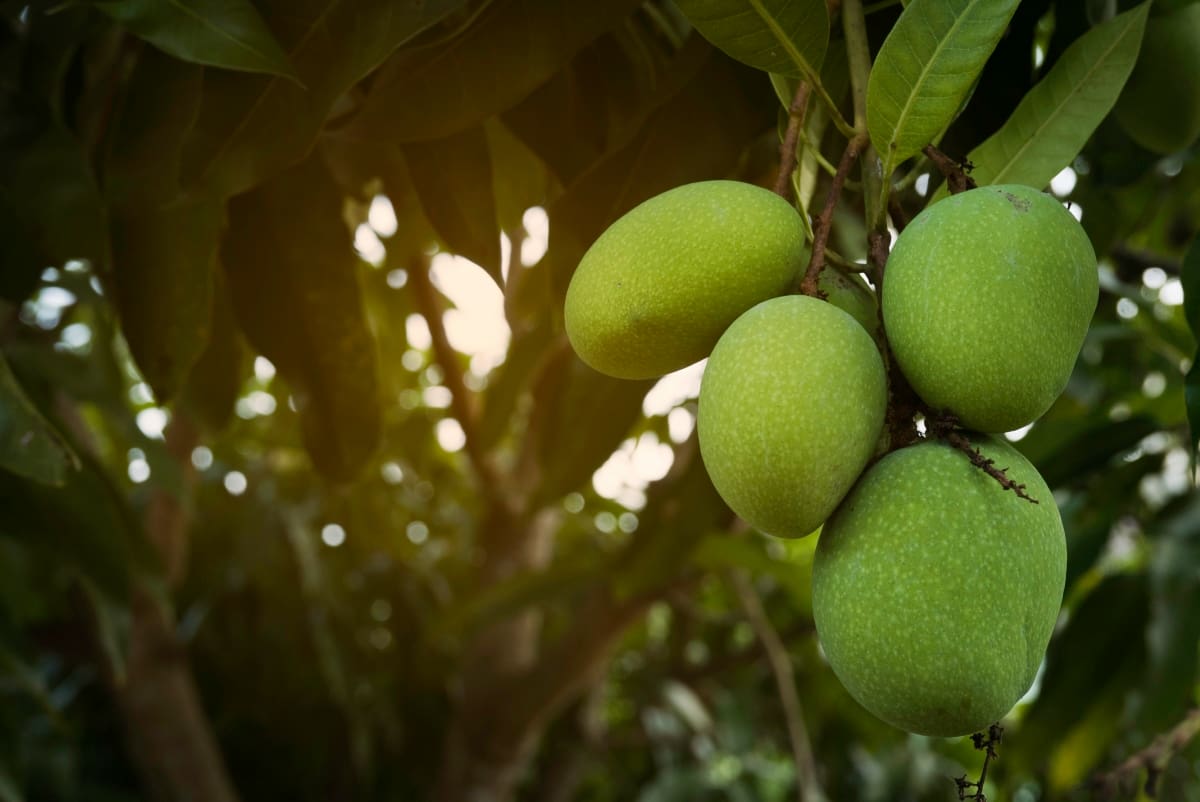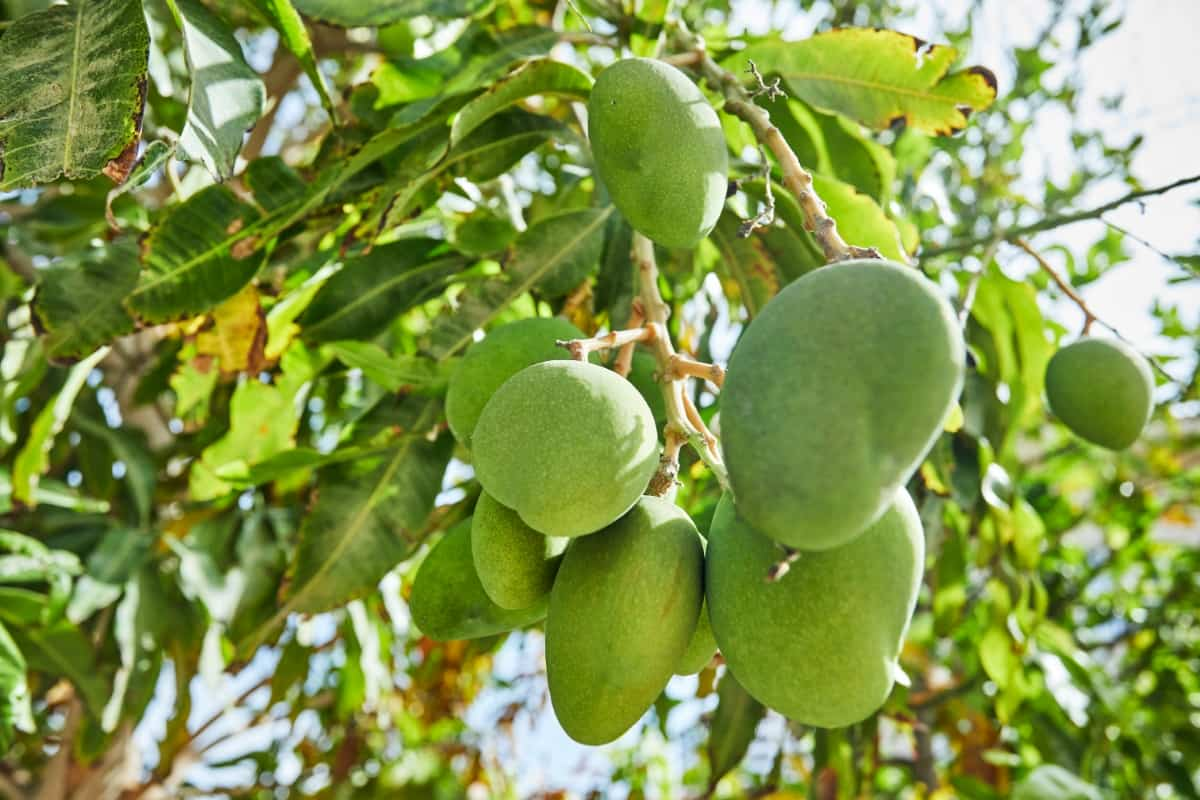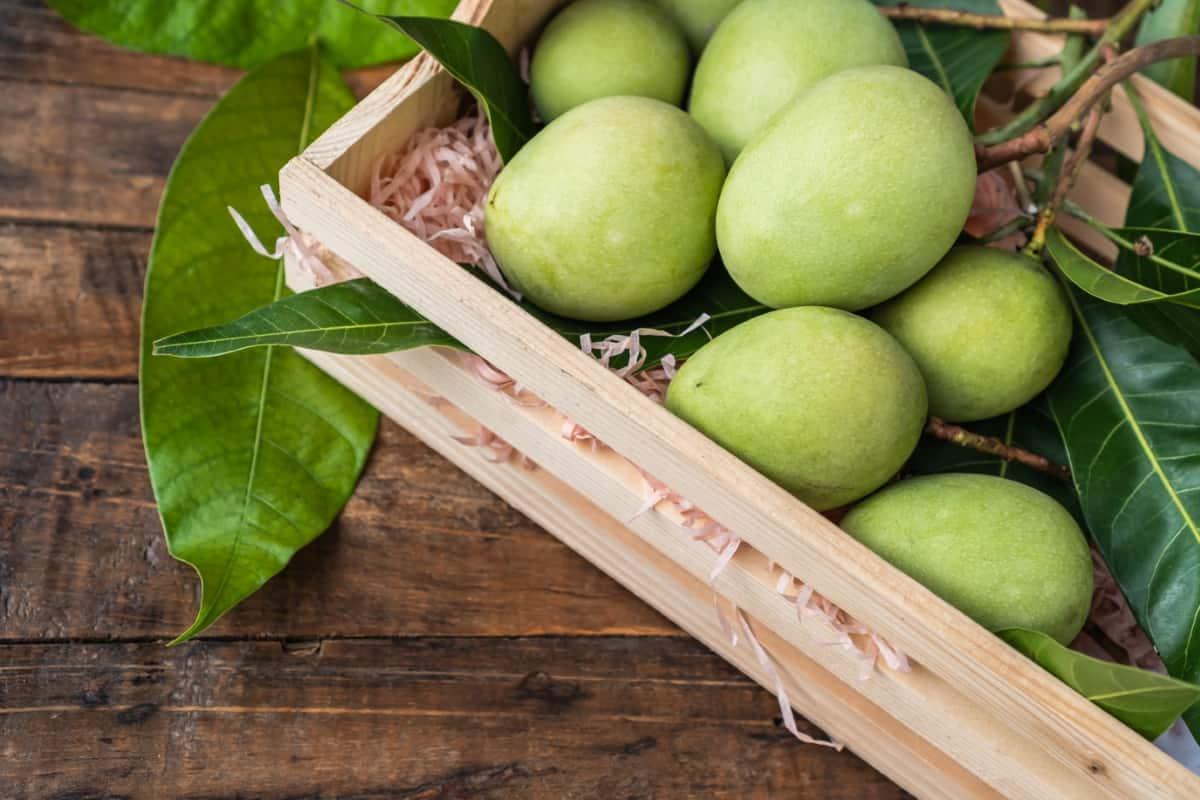Bombay Green Mango farming cultivates the region’s popular mango variety, Bombay Green. This farming practice involves nurturing and harvesting mango trees that bear distinctively green and tangy Bombay Green mangoes. The process includes careful selection of seeds, optimal cultivation techniques, and proper management to produce high-quality mangoes for domestic and export consumption.

Bombay Green Mango Farming
What is Bombay Green Mango Farming?
Bombay Green Mango farming refers to the specialized cultivation of the Bombay Green mango variety. It entails the meticulous nurturing and harvesting of mango trees that yield unique, tangy Bombay Green mangoes. This agricultural practice involves various aspects such as seed selection, precise cultivation techniques, and effective management to ensure the production of superior-quality mangoes. These mangoes are sought after for their vibrant green color and distinct taste and are cultivated for local consumption and export markets.
Special Features of Bombay Green Mango
- Bombay Green Mango, known as Malda and Shehroli, is primarily grown in North India.
- It ripens earlier than other varieties, making it popular in trade markets.
- The mango has a rich aromatic flavor and an oval, oblong shape.
- Its skin has a characteristic Spanish green color.
- The fruit weighs less than a pound at maturity and remains mostly green with minimal red blush.
- The flesh is dark orange, completely fiber-less, and has a rich and spicy flavor.
- The mango is known for its easily removable seed.
Pits Preparation for Bombay Green Mango
- Pits preparation for Bombay Green Mango involves several key steps.
- Select suitable locations with well-drained soil and ample sunlight.
- Dig pits of appropriate size and depth, typically around 1 meter wide and 1 meter deep.
- Add organic matter such as FYM and compost or manure into the pit to enhance soil fertility.
- Ensure proper spacing between pits to allow adequate airflow and prevent overcrowding.
- Prioritize timely pit preparation to coincide with the mango planting season for optimal growth and development.
Plantation of Bombay Green Mango Trees
- Selection of Healthy Saplings: When selecting saplings for Bombay Green Mango, choose those 2-3 feet tall with a strong root system. Look for healthy green leaves without any signs of disease or pests. Opt for straight and sturdy stems without damage. Prefer seed-grown saplings for better vigor and disease resistance compared to cuttings.
- Plants Per Acre: The plant density in Bombay Green farming varies based on spacing: traditional cultivation has 45-60 plants per acre. In comparison, high-density cultivation can accommodate up to 200 plants per acre.
- Age of the Plant when Planted: The age of the plant while at the time of planting in Bombay Green farming is variable and not explicitly mentioned. While mango saplings are generally planted at 2-3 years old, no specific information is available regarding the plant’s age in Bombay Green Mango farming.
- Support and Stacking of Plants: Support and stacking of plants in Bombay Green Mango farming involves using stakes or trellises to support the mango trees, ensuring their proper growth and preventing damage from heavy fruit loads
Drip Irrigation/ Water Management in Bombay Green Mango
Drip irrigation is an effective water management technique in Bombay Green Mango farming. It involves delivering water directly to the root zone through a network of tubes with emitters. This method efficiently utilizes water, reducing water wastage by 30-50% compared to traditional irrigation systems. Drip irrigation in Bombay Green Mango farming typically requires an application rate of 5-10 liters of water per plant per day, depending on climate, soil conditions, and tree age.
In case you missed it: Dashehari Mango Farming: A Comprehensive Guide to Planting, Pruning, Care, and Harvest

Compost/Fertilizers Application Stages
Compost and fertilizers are applied at different stages in Bombay Green Mango farming. During pit preparation, organic matter like compost or manure is initially incorporated into the soil. Then, at the time of planting, a balanced fertilizer is applied. In subsequent stages, fertilizer applications are carried out during the pre-flowering, flowering, fruiting, and post-harvest phases. The specific types and quantities of fertilizers vary based on soil nutrient analysis, tree requirements, and recommended agricultural practices.
Pruning Stages/Season for Bombay Green Mango
Pruning in Bombay Green Mango farming is carried out at specific stages and seasons to promote tree health and optimize fruit production. The primary pruning stages include formative pruning, done during the initial years to shape the tree structure, and maintenance pruning, performed annually to remove dead, diseased, or crossing branches. The ideal time for pruning Bombay Green Mango trees is during the dry season or winter, after the fruit harvest, and before the onset of new growth, ensuring minimal stress to the tree and maximizing the effectiveness of pruning practices.
Flowering Stages for Bombay Green Mango
Time of Flowering: The Bombay Green variety showed the earliest panicle emergence on 31st January. However, Gulab Khas recorded the shortest duration of 50% flowering (12.67 days) and the period from bud break to full bloom (22.33 days).
Factors Affecting Flowering: Environmental factors like temperature and humidity affect the process of flowering in mango, besides nutritional and hormone factors1. A study on the flowering behavior of elite mango cultivars in subtropical conditions of Bihar showed that the earliest bud break in cultivar Bombay Green was on 19th January, followed by Bombai and Zardalu on 26th January. Rewrite in 30 words.
Importance of Flowering: Flowering is a crucial factor that impacts mango yield. A study was conducted to analyze the flowering behavior of elite mango cultivars in the subtropical conditions of Bihar. The results showed that Bombay Green’s cultivar exhibited the earliest bud break on 19th January, followed by Bombai and Zardalu on 26th January.
Pollination Techniques
Mango is a self-fertile plant, but cross-pollination enhances fruit set. The main pollination mode for mango is entomophilous, meaning it relies on insects for pollination. Insects, such as bees and flies, play a vital role in the pollination process of mango trees, facilitating the transfer of pollen between flowers and promoting successful fruit development.
Pests and Diseases Management in Bombay Green Mango
In Bombay Green Mango farming, several pests and diseases can affect the crop, and effective management strategies are necessary. Common problems include mango hoppers, fruit flies, aphids, and mealybugs. Integrated Pest Management (IPM) techniques, such as regular monitoring, cultural practices, and judicious use of biopesticides and insecticides, can help control pest populations.
As for diseases, anthracnose, powdery mildew, and bacterial black spot pose significant risks. Disease management involves maintaining proper orchard hygiene, timely pruning, and applying fungicides during the appropriate stages. Regular disease surveillance and using disease-resistant varieties are also recommended to minimize the impact of pests and diseases on Bombay Green Mango cultivation.
Harvesting Time and Yield of Bombay Green Mango
The maturity period from fruit set to harvest of a mature mango fruit typically spans 120 to 140 days. The yield of mango fruits can vary based on factors like variety, climatic conditions, and plant population. On average, the yield ranges from 5 to 9 tons per acre.
In case you missed it: Neelum Mango Farming: A Comprehensive Guide to Planting, Pruning, Care, and Harvest

Conclusion
Bombay Green Mango farming is a specialized practice that cultivates the distinctively green and tangy Bombay Green mango variety. It requires careful selection of healthy saplings, appropriate spacing, and optimal water and nutrient management. Pruning, support, and proper pest and disease management are crucial for maintaining tree health and maximizing fruit production. Bombay Green mangoes’ unique flavor, vibrant green color, and rich aroma make them highly sought after in trade markets.
- Ultimate Guide to Ossabaw Island Hog: Breeding, Raising, Diet, and Care
- Ultimate Guide to Juliana Pig: Raising Facts, Size, Diet, Care, and Lifespan
- Raising Lleyn Sheep: Disadvantages, Price, Uses, Characteristics, and Care
- Ultimate Guide to Meishan Pig: Breed Facts, Breeding, Raising, and Care
- Ultimate Guide to Teacup Pigs: Raising, Diet, Lifespan, Cost, and Care
- Guide to Raising Poll Dorset Sheep: Facts, Profile, Characteristics, Uses, and Care
- Ultimate Guide to Bighorn Sheep: Characteristics, Diet, Lifespan, Breeding, and Lifecycle
- Ultimate Guide to Raising Katahdin Sheep: Farming Facts, Breed Profile, Uses, and Care
- Ultimate Guide to Raising Oreo Cows: Belted Galloways Farming Facts, Profile, Uses, and Care